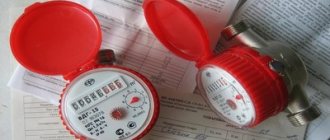An electricity meter or energy meter is a device that keeps track of consumed electricity. Based on his testimony, payment is made for the electricity consumed by the consumer.
Dear readers! Our articles talk about typical ways to resolve legal issues, but each case is unique. If you want to find out how to solve your particular problem, please use the online consultant form on the right or call. It's fast and free!
A registered electricity meter must be installed in any premises where electricity is consumed from the network.
Good to know! The meter has a certain service life, it must be checked, it may fail. The operational, warranty and verification periods, possible malfunctions, replacement methods and financial liability for the electric meter will be discussed in the article.
Electric meter service life
In relation to electricity meters, two basic concepts about timing are used:
- service life (operation);
- warranty period;
- interverification interval.
The service life of an electric meter is the period during which the manufacturer is obliged to provide the consumer with the following conditions:
- bear responsibility for shortcomings that arise during the operation of the meter due to the fault of the manufacturer;
- the ability of the consumer to use the device for its intended purpose.
The service life of an electric meter is set by its manufacturer and depends on the accuracy class.
Main types of electricity meters based on operating principle:
- induction;
- electronic (static).
Good to know! Electricity meters are also classified by accuracy class. The accuracy class determines the maximum permissible error when measuring electrical energy, expressed as a percentage.
For most household electricity meters, there are 3 accuracy classes: 2.5, 2.0, 1.0. In accordance with new state standards, all meters installed for the first time must have an accuracy class of at least 2.0. Old devices with a lower accuracy class (for example, 2.5) must be replaced with new ones immediately after the verification period has expired.
Note! The service life of a modern meter with accuracy class 2.0 and higher is 30 years or more. For old electricity meters with an accuracy class below 2.0, their service life ends when their verification period expires.
Service life of devices
In accordance with GOSTs, the service life of electricity metering devices depends on the model. They can be induction or electronic.
In 2020, a new decree was issued stating that it is necessary to replace outdated models of instruments with accuracy of class 2 and lower. This law is necessary in order to eliminate theft and fraud with electricity. With new counters, you won't be able to apply a magnet to slow down the disk. The main models of electric meters and the terms of their use are described below.
Standard Energy Meter
Induction or mechanical models
The operating principle is electromagnetic induction. The current used flows through the roller, which creates a magnetic field. It causes the disk to move and the readings begin to be transmitted to the display. The more powerful the devices connected to the network, the faster the disk will spin.
The service life of induction devices is up to 30 years. Currently, induction meters are no longer produced due to their low accuracy class. It is not recommended to purchase them because you will have to overpay for electricity.
Energy theft using a magnet has also become common in recent years. It was installed on the meter body, due to the magnetic field - the disk slowed down its rotation and distorted the readings.
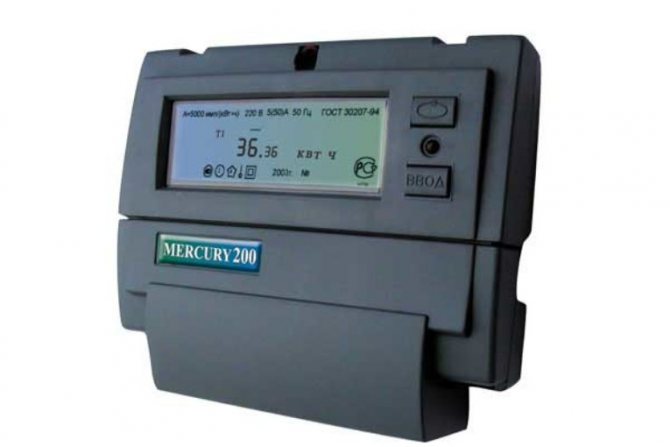
Mixed type of device
Electronic meters
Such models have a fairly high accuracy class; there are almost no errors in the readings. The main difference from induction is that such models do not have moving disks and coils.
In theory, such a design should increase the service life of the device. But it has not yet been possible to prove this in practice, since these models appeared relatively recently.
Note! Almost all old device models are recommended to be replaced with electronic ones. They are easier to use and operate silently.
You might be interested in Connecting ops-1
The service life is 25 years.
Mixed type
Hybrid meters mainly include models whose design contains parts of the two devices described above. Mixed counters do not exist as a separate class. Inside they can be either induction or electronic. For example, a device in which there is a magnetic coil and a screen is located outside is considered mixed.

Calibration interval table
For hybrid electrical appliances, the service life is set depending on the design - 25-30 years. These models are much cheaper than induction and electronic ones.
Difference between warranty period and expiration date
The warranty period is a period of time during which problems that arise with your electric meter or identified deficiencies must be eliminated by the seller of the product.
The warranty period is set by the seller, at his discretion, and compliance with the buyer’s rights is regulated by the Law “On the Protection of Consumer Rights”.
There are two types of warranty periods:
- from the moment of production;
- from the moment of start of operation.
As a rule, the seller establishes a production guarantee for 3.5 - 5 years and a guarantee from the moment the meter begins operation.
The main difference between service life and warranty is that while the device is under warranty, you can make demands on the seller to eliminate any problems found or encountered at the seller’s expense.
During the period of operation, you can make claims only regarding the main function of the device - measurement, as well as significant deficiencies identified.
Calibration intervals
Each electrical energy meter, in addition to its service life and warranty period, has its own calibration interval. It is also noted in the device passport and differs depending on its model. Single-phase meters are verified once every two years. Three-phase devices with a shorter interval - once every 12 months.
The established calibration intervals begin not from the date of manufacture, nor from the moment of purchase, but from the day when the devices were put into operation. Representatives of Energonadzor install a seal that reflects information about the statute of limitations, and also draw up a report in which the information is duplicated. If the electric meter has not been used for the specified time, a new verification will be required. When the device is inactive, it may go astray or the error in its operation may increase, which will also lead to incorrect recording of readings.
Instrument verification timeframes
Verification is a test of an electric meter in a special accredited laboratory, during which the accuracy of the measuring ability of the device is checked. For meters, depending on their type, different verification intervals are established, during which the instrument readings can be considered valid.
There are three types of verifications:
- initial verification performed after production;
- periodic – performed at certain intervals;
- extraordinary.
Let's celebrate! The point in time for periodic verification is counted from the moment of the initial verification of the device, the date of which is indicated in the technical passport.
Depending on the type of electric meter, the verification intervals are:
- for mechanical induction disk - no more than 8 years:
- for electronic digital – no more than 16 years.
Calibration intervals are indicated in the device passport. After verification, a corresponding mark is placed in the passport, or a certificate is issued.
Indications for extraordinary verification
Extraordinary verification is carried out in the following cases:
- the passport for the device or the verification certificate has been lost;
- it is necessary to adjust or configure the meter;
- the verification stamp is damaged;
- periodic verification was missed;
- The meter has been subjected to shock or is not operating satisfactorily.
Service life of a single-tariff and dual-tariff device
Devices can be divided by type. Single-phase devices can be both single-tariff and multi-tariff devices operating from a 220 Watt network.
You might be interested in: Alternating current generator design
Single-rate devices are more practical and calculate the energy consumed at a common rate. And multi-tariff devices are more difficult. They calculate energy depending on the time of day.
Three-phase devices are those that can operate from a network of 220 and 380 V. Such electricity metering devices are mainly multi-tariff and are more often used in industry or in homes where the connection is made using two types of voltage. The warranty period for operation of single-phase metering devices in different premises is described below.
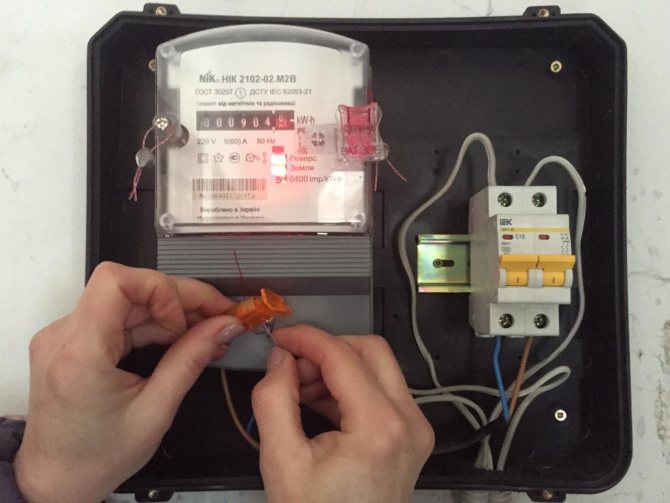
Sealing the device
In apartments It is necessary to replace electricity meters in apartment buildings in the following cases:
- meter malfunction;
- the expiration date has expired;
- did not pass the intercheck interval;
- personal preference to change the meter.
Apartments must be equipped with meters with an accuracy class of 0.5 to 1. If the model does not correspond to this, then it must be replaced with an electronic one. Further, devices are replaced at intervals of 16 years.
In a private house
Residents of private houses are also interested in when it is necessary to replace the old meter with a new one. This depends on the service life and shelf life of the device itself.
Basically, in private homes the power consumption of appliances is higher. This is due to the fact that you also need to count the energy consumed, where a large number of powerful devices are connected (heating boilers, boilers, lighting groups, and so on).
Therefore, in private homes, meters fail earlier. The inspection interval should be carried out every 6 years and the device should be checked for defects.
In a non-privatized apartment
People who live under a social tenancy agreement do not have to buy an energy meter and pay for its installation. In this case, it does not matter where the meter itself is located, on the staircase or indoors.
If you need to replace the device, then write a statement to the management company. In the application you must write the reasons for replacing the device, as well as indicate the installation date and test interval. If there is a document indicating that the meter is faulty, it must be attached.
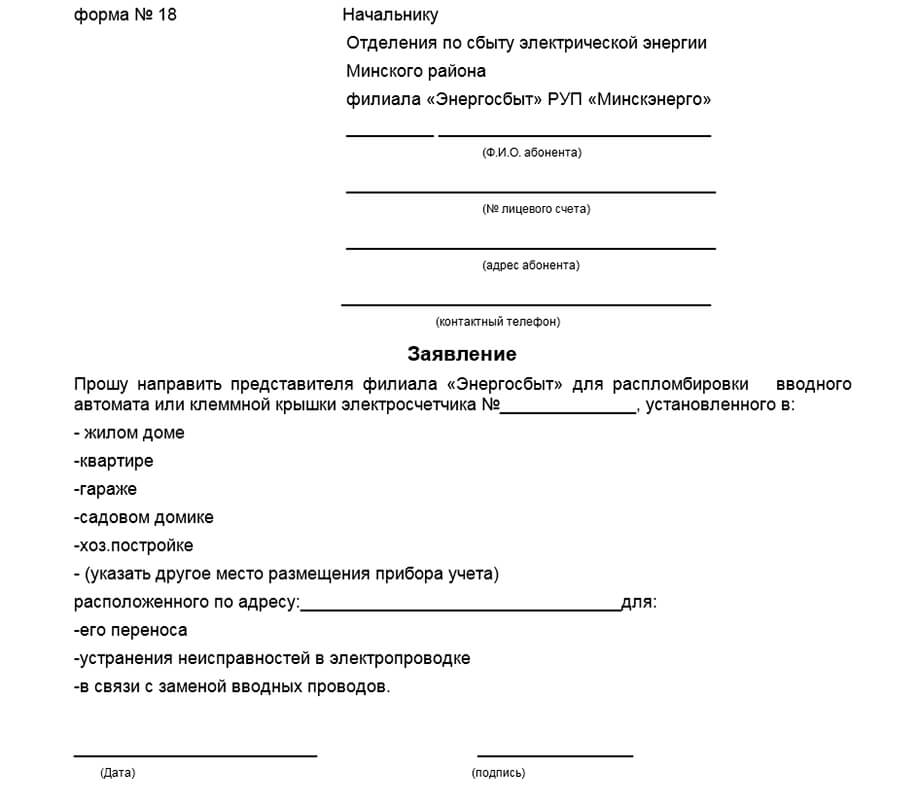
Sample application for device replacement
Reasons for replacing the meter
The main reasons for replacing an electricity meter:
- expiration of the verification period for a device of accuracy class 2.5 and lower;
- obsolescence. For example, the meter does not have a night tariff function;
- the energy meter is designed for low power electric current;
- frequent malfunctions and malfunctions;
- the meter has not passed verification and cannot be repaired.
How to replace the counter?
Procedure for replacing an electric meter:
- Submit an application to your sales company. The application indicates the current readings of the device, the date of the last inspection, and the subscriber’s details. Recently, you can apply by phone.
- Obtain approval to replace the device (often also possible by telephone).
- Select a contractor to carry out the replacement. Usually, the electricity supplier can carry out the replacement procedure for the device itself. You can also contact any other organization that has the necessary license.
- Choose an electric meter that meets your requirements and technical requirements for the electrical installation.
- Agree with the master on the date of his visit.
- A specialist dismantles and installs a new device. Issues a certificate of work performed.
- Provide the energy company with a certificate of work performed, containing the date of work, the number and type of meters removed and installed, a copy of the passport of the new device and its readings.
- Call an inspector from your energy supply company to seal it. Sealing can only be performed by a representative of the electricity supply company, upon completion of which a corresponding certificate is issued.
- Present the deregistered device to a representative of the sales company, or hand over the meter to him if it is the property of the company.
Who should change?
In order to save time, it is more advisable to contact your electricity supplier to replace the meter so that they can carry out the entire complex of work themselves.
Who should pay for the replacement?
Responsibilities for paying for a new electric meter, as well as for its installation, lie with the owner of the premises, unless the replacement is caused by a warranty case or the identification of significant deficiencies during operation.
In a communal apartment, the cost is divided among all owners. The sealing of the new device is carried out at the expense of the electricity supplier.
To avoid unexpected expenses, you should monitor the deadline for the next verification of your meter, as well as its technical condition.
Note! If there is a need to replace an old energy meter, you should first contact your sales organization, and only then choose a contractor for installation. Responsibility for replacing the electric meter and paying for the work is the responsibility of the owner of the premises.
Didn't find the answer to your question? Find out how to solve exactly your problem - call right now: +7 (Moscow) +7 (812) 309-53-42 (St. Petersburg) It's fast and free!
The service life of the electric meter is 2020
Devices that take into account electricity consumption are installed in every apartment or private house. According to the principle of operation, they can be induction or electronic; all models have their own design features and different costs. Currently, induction devices are increasingly being replaced by electronic ones, so questions often arise among subscribers: what is the service life of an electric meter and when should the electric meter be changed? It is mandatory to have such information in order to avoid an unpleasant situation with the organization - the electricity supplier.
The fact is that this shelf life should be distinguished from the guaranteed service life. After its release, the meter can lie in packaging for 5, 10, 15 or even 20 years, but it will still be considered suitable for installation if the established deadlines have not been violated.
Therefore, when assigning control checks, the reference point is the service life of the electric meter, which is associated with the intensity of work processes. After all, the conditions of use vary. One meter can be installed in a country house or in an empty apartment where electricity is rarely used, occasionally. The other, on the contrary, is in constant work and is subject to intense wear and tear. Induction devices, the main parts of which are in constant rotation, are especially affected.
After a certain period of time, the device will produce data with large errors, which will gradually continue to increase. For timely detection and elimination of the consequences of wear, an inter-verification time interval is assigned. Without this proof test, the instrument manufacturer does not guarantee its accurate operation after a specified period of time. The timing of such checks and complete replacement of electricity meters largely depends on the specific model and design features of a particular device.
Electric meters can be single- or three-phase and connected to the network using measuring current transformers or without them (indirect and direct connection). All meters currently used are divided into induction and electronic. Taking these features into account, it is determined what service life the electric meter of a given model should have.
The first option was initially used in all spheres of people's lives and activities. The installation of induction electricity meters stopped only in the mid-90s of the last century. Currently, they are still in use in large numbers and are considered serviceable. However, they are relegated to the category of legacy devices without multi-tariff metering support. In addition, these devices cannot transmit remotely acquired data.
The main advantage of induction devices is their low cost, compared to electronic devices. They are not affected by power surges and poor power quality. These electricity meters have a long service life and are considered very reliable.
However, based on modern realities, these devices have significant drawbacks. First of all, they are distinguished by a low accuracy class, within 2.0, and an increase in error as the load decreases. Induction meters themselves consume a significant amount of electricity through voltage and current circuits. They are practically not protected from theft of electricity, cannot simultaneously take into account active and reactive energy, and have too large overall dimensions.
The main difference between electronic meters is microcircuits and the absence of any rotating parts. The signals coming from the measuring elements are converted electronically into power and energy with a proportional magnitude.
There is a higher accuracy and service life of the electric meter, so longer inter-check time intervals are established for them. They are equipped with a built-in digital interface and tarifficator.
Electronic meters are capable of simultaneously taking into account active and reactive electricity; they can be configured for single- or multi-tariff mode. Active energy is taken into account for each individual phase. All received readings are displayed on the liquid crystal display. If necessary, programming is carried out to operate in the required mode.
Each electric meter model has its own test interval, noted in its technical data sheet. It begins to be calculated from the moment the device is put into operation, and not from the time of purchase or date of manufacture.
Each meter is equipped with a seal indicating the expiration date. For single-phase devices it is 2 years, and for three-phase devices it is 1 year. If during this period of time the device has not begun to be used, then without performing a new verification it cannot be used for accounting. In all apartments and private houses, representatives of the service organization inspect the meters every six months, and in other facilities - every year.
However, sooner or later the time comes when, during the next inspection, it turns out that the electric meter is no longer capable of performing its functions. Many people begin to remember the service life of the meter and quickly decide when to change the electric meter. As a rule, the total period of operation of the device by this time is 16 years. In addition, the reason for replacement may be an unexpected failure of the device, which is detected by the subscriber himself. The device is dismantled and sent to the metrology service for examination for possible further use.
Currently, widespread replacement and installation of new equipment is being carried out, even if the current meter has not been completed by the established inspection date. This measure was initiated by a special government resolution, which requires the installation of metering devices with an accuracy class of at least 2.0.
In addition, all electricity meters with obvious mechanical damage, broken glass, or a faulty counting mechanism must be replaced. Meters that have been declared invalid by the regulatory authority are being replaced due to discrepancies between the readings of the actual electricity consumed. A new device is installed instead of the old one and in case of the user’s personal desire to switch to a multi-tariff mode.
After removing the old meter, a special tariff will be used for electricity calculations for this period. The maximum period from the installation of a new device to its sealing is set at one month.
All electricity metering devices, regardless of their installation location, are subject to the same requirements. When installing an electric meter in an apartment or private house, the necessary conditions must be provided. For these purposes, a dry and heated room is selected, in which the air temperature ranges from +1 to +40 degrees. There are no aggressive particles or components in the air that could affect the accuracy of the device.
A rigid surface is used for mounting the meters, and they themselves are installed vertically, eliminating the possibility of vibrations, deformations and other mechanical damage. It is allowed to use metal, plastic or wooden boards as surfaces.
The height of the device from the floor level is on average 0.8-1.7 m. In case of emergency, this parameter can be reduced to 0.4 m. The electric meter is provided with free access for maintenance, replacement and reading.
Electricity consumption has been monitored by an electric meter for over 100 years. From bulky structures, metering devices have turned into compact electronic devices. Any type of meter eventually wears out its life and requires replacement.
Common types of electricity meters
There are two types of electricity meters: induction and electronic. The first type is an electromechanical device; it has changed little over time. Its principle of operation is to rotate a metal disk with a mechanical counting device by an electromagnetic field. The rotation speed depends on the amount of energy consumed. The device is poorly protected against electricity theft and has few functions. If the consumption class meets the requirements, its use is permitted.
This is interesting: Fine for a magnet on an electricity meter in 2020
Electronic meters are characterized by high accuracy and versatility. Mechanical moving elements in it are replaced with an electronic circuit. Data is collected and displayed on the screen. The device allows you to select the desired tariff. In addition, the indicators of an electronic device can be transmitted over a distance.
There are also hybrid meters that combine electromechanical and electronic devices, but they are rarely used.
Electricity metering devices can be used for up to 30 years. For citizen consumers, the accuracy class of devices must be at least 2.0, in other cases - 1.0. When the service life has passed and the resource has been exhausted, a replacement is made. Owners of apartments and private houses are required to purchase new devices.
Each device has an expiration date and guaranteed performance. It can last longer. All these terms differ, and in order to coordinate them, an inter-verification interval is established. It depends on the quality of the model and is indicated in the passport.
The calibration interval is calculated from the moment the meter is installed, and not from the time of manufacture or purchase. The age of seals for single-phase meters should be 24 months, and for three-phase meters - 12 months. If the established period has passed and the device is not installed, it is not allowed to account for electricity consumption.
For metering devices in apartments, an inspection is provided, which is carried out once every six months, and in other cases - once a year.
- Regardless of who manufactured the meter, it must be checked for compliance with quality requirements, i.e. certified. Only in this case can it be used.
- The device is registered after installation and switching on. This is done in the presence of a representative of the energy sales company. He installs the seal and issues written permission for use. Also, the device must have a government seal, which is installed at the manufacturer. The homeowner should check the correspondence of the numbers on the device and in the acceptance certificate.
- The equipment is installed at a height of 170 cm, convenient for maintenance.
- The device is operated in a dry and accessible place (cabinet, panel, panel, niche, wall). The ambient temperature must correspond to the permissible temperature for the meter. Typically the lower limit is 0 0 C.
- The electrical wiring connected to the device must not be twisted or soldered. However, if you need to move the meter to another location and at the same time increase the wiring, you can install an input machine in the gap, which must be sealed together with the meter. In this case, it must be placed in a sealing box.
Its reliability, durability and ease of use depend on the correctly selected device. The following popular electricity meters are recommended:
- Single-phase induction device with accuracy class 2.0 (Fig. a). The device has been functioning flawlessly for 32 years. The interval between verifications is 16 years.
- Electronic single-phase meter (Fig. b). The service life is 30 years. The device is multi-tariff, with the ability to set a tariff schedule. Operational information is stored in a memory device.
Induction (a) and electronic (b) electricity meters
When purchasing a meter, you should check the serial number with that indicated in the passport. At the same time, it must contain a blue print.
Devices are purchased in specialized stores. Suppliers can provide installation services, after which the meter is guaranteed for a certain period.
Meters must be replaced in the following cases:
- refusal to work;
- lack of state verification seal;
- end of the verification interval (16 years);
- when the state verification period expired;
- uneven disk rotation;
- the housing or viewing window is damaged;
- during calibration, an error of more than 2.5% was revealed;
- non-compliance with the accuracy class, which must be no lower than second.
Replacing energy monitoring devices is work in an existing electrical installation and must be carried out by specialists.
Replacement of electricity monitoring devices is carried out by specialists
In this case, a report is drawn up indicating the final readings of the old meter and the initial readings of the new one, and also indicates the date for the next verification.
Individuals are prohibited from repairing devices themselves. To do this, you will have to break the seal, which is punishable by a large fine. Having discovered a malfunction, the owner of the meter can only report it to the energy supply company.
What types of malfunctions occur:
- Heating and burnout of contacts.
- Destruction of wiring insulation.
- Mechanical damage to the device body (cannot be repaired).
- The disk should not rotate and the electronic meter indicator should not blink after all consumers have been disconnected. It is only allowed to make no more than one rotation of the disk or blink the indicator no more than once within 15 minutes after the network is de-energized.
- Meter overload with the following external signs: too loud humming, characteristic smell of burnt insulation, yellowing of the viewing window.
Damage to the meter: heating and burnout of contacts
Repairs may cost more than purchasing a new appliance.
Checking the correctness of the electricity meter readings at home
It is advisable to check the meter for extraneous connections: power supply for intercom, telephone, Internet, antennas, alarm system.
It is recommended to check the devices at home after repair and verification.
In conditions of high humidity, the electric meter may overestimate electricity consumption.
If the meter buzzes after power consumption stops and the disk does not spin, this is not a sign of malfunction.
At a certain time, the user must verify the device. To do this, he can use the services of an energy supply company or an independent laboratory that has a certificate. After verification, the seal on the cover clamps is replaced with a new one, where the quarter number is indicated on one side, and the year of the next tests is indicated on the other. The seal confirms that the meter is valid for the entire next service period.
After verification, a new seal is placed on the meter
For verification, the device must be dismantled, after which it is taken to the laboratory for a period of at least 2 weeks. All operations, including installation back, are coordinated with the energy service.
The work is simplified if verification is carried out without removing the meter. To do this, its readings are compared with instruments for measuring resistance and power in certain operating modes. Now it is effective to carry out control using a computer, which has many more operations than other methods.
Monitoring the operation of the electric meter using a computer
During the entire period of use of the device, the user is obliged to keep its passport with the seal of a certified organization, indicating the date of start of operation.
The verification period should not differ from the passport one, and the seal should bear the designation of the controlling organization.
When the meter is installed on a landing or on the street, electricians service it without user intervention. The latter is only obliged to promptly pay for consumed electricity at the specified time.
How to slow down or stop an electric meter without a magnet can be found in the video below.
Electricity meters are needed by the energy supply company to keep track of electricity consumption. After a specified time from the start of operation, the devices are verified. When the resource is exhausted, the meter is replaced with a new one.
You need to know the reasons why you need to change the electric meter. If its replacement is not properly documented, the device does not bear the seal of the management company, and there is no mark in the passport about the date of the next verification, the meter is equated to ordinary electrical devices such as automatic machines, RCDs and is not considered a monitoring device.
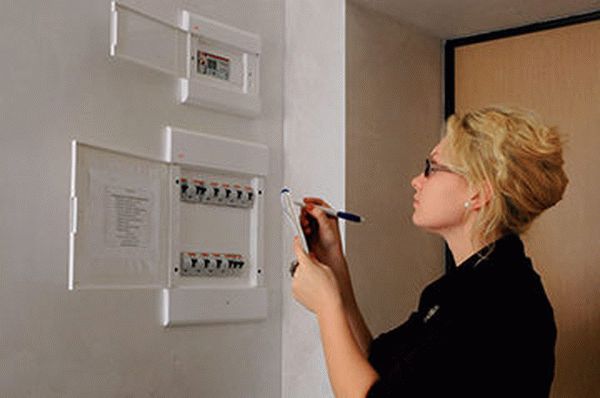
There are standards indicating for what period of time an electricity meter is designed.
This is interesting: If the hot water meter breaks down, what should you do? 2020
Upon expiration of the established period, the meter must be replaced; the energy company may send a decree on mandatory replacement.
What is the service life of the electric meter provided by the manufacturer, when it is necessary to change the induction device, and when it is necessary to change the electrical device.
And is it possible to continue to use the device if it still works properly after the expiration date?
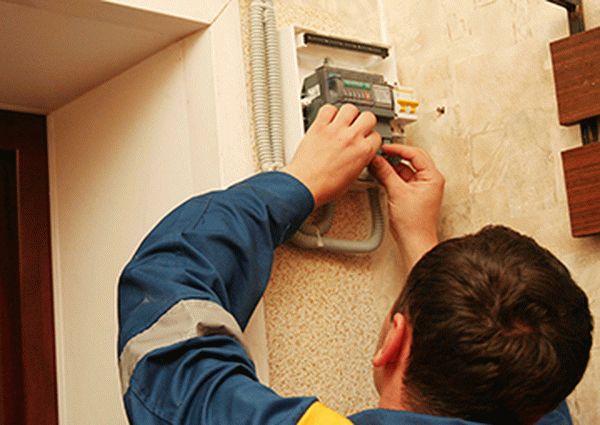
The accuracy class of a meter means the maximum percentage of error (in any direction) that the meter can allow.
Thus, previously devices of accuracy class 2.5 were allowed to operate.
This meant that 2.5% of energy could not be taken into account or, on the contrary, added.
For example, if the error is 2%, then a 100 W incandescent lamp can “wind” 98 W, or 102 W, per hour.
Today, the requirements for the accuracy class are higher.
Electricity meters come in two types, using different measurement principles and, accordingly, different designs.
The design is based on the principle of electromagnetic induction. The current consumed passes through the coil, which creates a magnetic field. This field rotates a disk, which is connected by a worm gear to the gears of the dial. The more current passes, the greater the magnetic field and the faster the disk rotates.
Single-phase induction meter SO-I446M
Modern electronic metering devices are distinguished not only by high accuracy, but also by the absence of moving mechanisms, which theoretically increases their service life. “Theoretically”, since devices have recently entered our lives, and they have not yet had time to be tested by time.
The instructions for electronic meters indicate a shelf life of 25 years - 30 years.
The concept of a “hybrid” meter, in fact, does not exist. The design of the device is either mechanical or electronic. Models that have external features of both are sometimes called hybrid.

The model may have a mechanical filling, but at the same time be compact, with an attractive interface and LCD display.
On the other hand, many electronic devices are equipped with a simpler and more familiar mechanical dial with scrolling numbers on the rollers.
This mixed option usually costs slightly less and helps save on the purchase of a device while maintaining high precision electronic design.
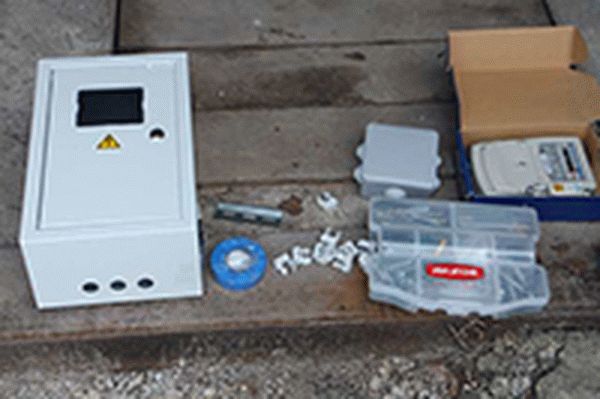
Remote meters are used in private homes. The box for the street electricity meter ensures safe operation of the device.
You will find a diagram for installing an electric meter in a private house here.
The transformation ratio of an electricity meter is a value indicating the accuracy of the device. You will learn how to calculate this value in this material.
The moment any electric meter is checked and sealed, its service life begins. This is not the same period of 25 years indicated in the manufacturer’s passport (25 years is the approximate period, the shelf life during which the device will remain in working condition, according to the factory’s calculations).
In the documentation, next to the commissioning date, the time and date of the next test that will need to be performed is indicated. Otherwise, this period is called the inter-verification interval (MPI).

The fact is that although the device as a whole continues to work, from time to time malfunctions invisible to the eye may appear in it, and the error may increase, which must be identified and eliminated.
The warranty period for electric meters, as for any other device, is the period during which the buyer can count on free warranty service, repair or replacement.
Different manufacturers indicate different warranty periods, for example 5 years.
Calibration intervals may differ for different meter models. For single-phase – 2 years. For three-phase - a year. Electronic meters can be checked less frequently: once every 4 to 16 years.
In addition, different types of inspections may be scheduled for different interverification periods. So, if an electric meter is subjected to metrological control once every 16 years, then it will be checked for serviceability of the internal battery and errors in operation every 6 years. Checking the reliability of circuit connections can be ordered by energy sales organizations in accordance with their work schedules.
The essence of such a check (connection reliability) is to remove the cover, remove dust from the contacts, tighten the bolts and reseal the seal.
The start of the verification interval is the date of sealing and commissioning, and not the date of production or purchase.
After the verification interval has expired, the metrological service can conclude that the meter is still in good condition and can continue to be used.
The meter is checked for errors:
- Primary at the manufacturing plant.
- Periodically. At the end of the verification period, the electric meter readings are compared with control devices.
- Out of turn. Even if the verification period has not expired, verification can be carried out in cases where the passport was lost, the seal was broken, doubts arose about the correctness of the readings, the device was repaired and other emergency situations.
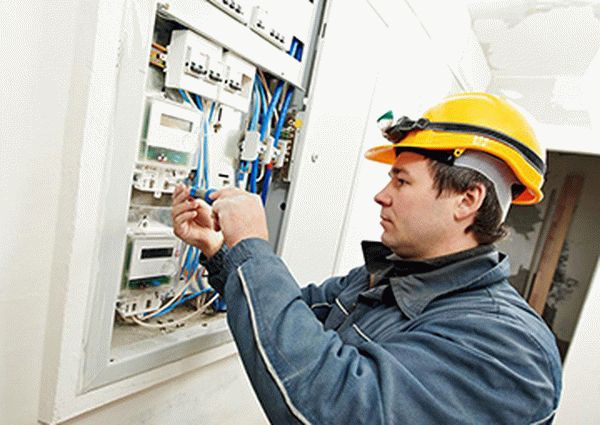
The verification can be performed either by a representative of the energy sales company or by a specialist from a certified metrology laboratory.
Finding the latter can be more difficult, but their services can cost less than a full-time electrician.
The verification procedure is carried out on site; dismantling of equipment is not required. The operation of the electric meter is checked with an ohmmeter and wattmeter in several operating modes.
In addition, the sensitivity threshold is determined, an external inspection of the housing is carried out, the insulation strength and the absence of self-propelled are checked.
So, the service life of the device (the approximate time of its proper operation) is indicated in the passport and is approximately 25 - 32 years.
The inter-verification period is indicated in the technical documentation by the testing electrician and begins from the moment the device is put into operation.
This is the time until the next check. Regular checks and comparisons of readings with multimeters are carried out once every 1 - 2 years, more thorough checks are established by energy sales once every 4, 6, 16 years and other periods.
The warranty period is the time during which you can receive warranty repairs. This could be 2, 3 or 5 years.
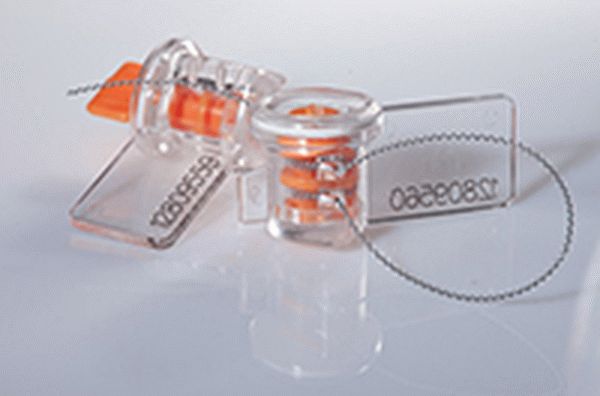
After installing an electricity meter, it is necessary to register it; for this, a seal is placed. How to seal an electricity meter and who should put the seal, read the article.
How to correctly take readings from a two-tariff meter, see this topic.
There is no need to rush service companies with inspections, even if it is clear that the inspection period has expired. But if a representative of the organization arrives before the expected time, you need to clarify the reason for the unscheduled verification and make sure from your passport that the time has really come.
Electricity supply companies often force consumers to change their electricity meters to new models. Induction devices are becoming obsolete, and electronic ones are being installed in their place. But this procedure is not free, and the cost of new devices is far from symbolic.
In order not to get into trouble and not pay big money to energy companies where you are not obligated, it is worth knowing the service life of the electric meter. If its warranty period has not expired, and the device itself has no complaints or errors, then no one has the right to force the consumer to replace it.
Energy meters are divided into types according to the following principles:
- By type of action.
- By accuracy class.

Based on the principle of electricity calculation, there are old, well-known induction devices and new electronic models. Electromechanical devices are found in most houses and apartments, although today they are considered obsolete. These devices, despite their age, have some advantages over improved static models; their verification period is much longer.
This is interesting: Meter Mercury 201: technical specifications, connection diagram 2020
Electronic meters differ from their predecessors not only in appearance; they offer subscribers multi-tariff electricity calculations, which can significantly reduce the cost of paying for current consumption. This type of device is being actively introduced by energy supply companies, because it is very problematic to interfere with their activities and rewind the readings. The accuracy class of such devices may be slightly higher than that of induction devices. A positive point is that static devices do not increase the calculation error even at sub-zero temperatures.
Electricity meters, as technically complex devices, must be accompanied by passports. This document specifies the individual characteristics of the model and expiration dates, confirmed by laboratory tests.
The consumer must understand that relying on the periods indicated in the passport comes with reservations. Firstly, it is important to start counting not from the date of purchase in the store or manufacture of the device, but from the moment of operation. After installing the new device, Energonadzor employees are invited to seal it and draw up a connection and commissioning certificate. It is from this date that the service period is counted. Secondly, the quality of work and its duration are affected by the frequency of use. The meter can be located in a country house where electricity is used from time to time, or it can be located in an apartment in which a large family lives, which means that the load is maximum.
The service life indicated in the passport is not a maximum, but after its expiration the device must be checked to determine the possibility of its further operation. The maximum service life is considered to be 30 years of active use, but many devices fail much earlier.
When purchasing an electric meter, the consumer is given a warranty card along with a passport. The period specified therein in most cases is five years. This is the time during which the owner of the device can contact the seller or manufacturer with complaints about detected defects in the device or demand free service.
If during the warranty period the device breaks down, or a defect is discovered during installation, the buyer can count on a replacement of the device. In this case, the buyer has the right to request an identical model or choose a different device in the store. If the device cannot be exchanged, the seller is obliged to return the money spent to the buyer.
A return of a low-quality electric meter can be made even after the end of the warranty period. The seller will be obliged to replace it if the buyer provides official evidence that the device has a manufacturing defect. To do this, you should first contact an expert to obtain an assessment of the origin of the detected defect.
Each electrical energy meter, in addition to its service life and warranty period, has its own calibration interval. It is also noted in the device passport and differs depending on its model. Single-phase meters are verified once every two years. Three-phase devices with a shorter interval - once every 12 months.
The established calibration intervals begin not from the date of manufacture, nor from the moment of purchase, but from the day when the devices were put into operation. Representatives of Energonadzor install a seal that reflects information about the statute of limitations, and also draw up a report in which the information is duplicated. If the electric meter has not been used for the specified time, a new verification will be required. When the device is inactive, it may go astray or the error in its operation may increase, which will also lead to incorrect recording of readings.
Although all responsibility for the operation of the device and timely notification of specialists about detected malfunctions lies with the owner, representatives of municipal authorities are also required to regularly inspect them.
Regulatory documentation in the field of electrical energy consumption establishes a certain frequency of inspections. Accounting for the uninterrupted operation of electricity meters and taking intermediate readings is carried out at the following intervals:
- In private houses and apartments, visits should be made once every six months.
- At government or commercial facilities at least every other year.
Owners of households and legal entities must provide access to representatives of Energonadzor or inspection companies, allowing them to inspect the device and take readings.
There are two main reasons that indicate the need to change the device to a new one:
- The meter failed earlier than necessary, that is, it did not reach its actual limit. Such situations happen quite often and are associated with improper operation or the presence of breakdowns of factory or household origin.
- The service life has come to an end and the electric meter is no longer able to perform its functions with the declared accuracy.
Many owners of apartments and houses today are faced with another common reason - the need to switch to new electronic devices, although induction devices are functioning properly and their operating time has not yet expired. This requirement is indeed justified. On May 4, 2012, Decree of the Government of the Russian Federation No. 422 was issued, which established that the use of electrical metering devices below accuracy class 2.0 is not allowed. There is one more reason that, although it does not oblige replacement, stimulates it - multi-tariff calculation. This innovation allows you to pay for consumed electricity at different rates depending on the time of day it is consumed.
Electric energy metering devices installed on commercial property are subject to replacement, repair and installation at the expense of their owners. Meters installed in public places or at government facilities are changed at the expense of those organizations on whose balance sheet they are listed.
Representatives of Energonadzor can force owners to buy a new meter only if the device has a low accuracy class, namely less than 2.0. If changing the electric meter is recommended because it can have a positive impact on the owner’s spending, then the choice remains with the owner.
In order for the supplied electrical energy meter to serve for a long time and uninterruptedly, it must be operated correctly. And the rules of use directly depend on the type of device. Thus, induction models are less demanding to maintain, they are not afraid of voltage surges, and are not too susceptible to dust, since they have an impenetrable body. The only reason they should be protected is from low temperatures. When exposed to sub-zero temperatures, they may become confused and operate with greater metering errors.
Electronic devices are more convenient to use, especially in modern times, but require more care. They should be placed in special protective boxes to protect them from dust and moisture. Such devices are afraid of strong and frequent voltage drops, so it is better to install stabilizers in front of the panel.
The main advice for all users is the absence of independent repairs and experimentation with electricity.
»
Counters
Gas meter with thermal corrector: features of choosing a meter in 2020
Read more
Counters
Two-tariff meter: profitable or not? 2020
Read more
Counters
Until what date should water meter readings be reported in 2020?
Read more
Counters
How to check an electric meter for correct readings 2020
Read more
Counters
Which electricity meter is better to install in a private house? 2020
Read more
Great article 0




